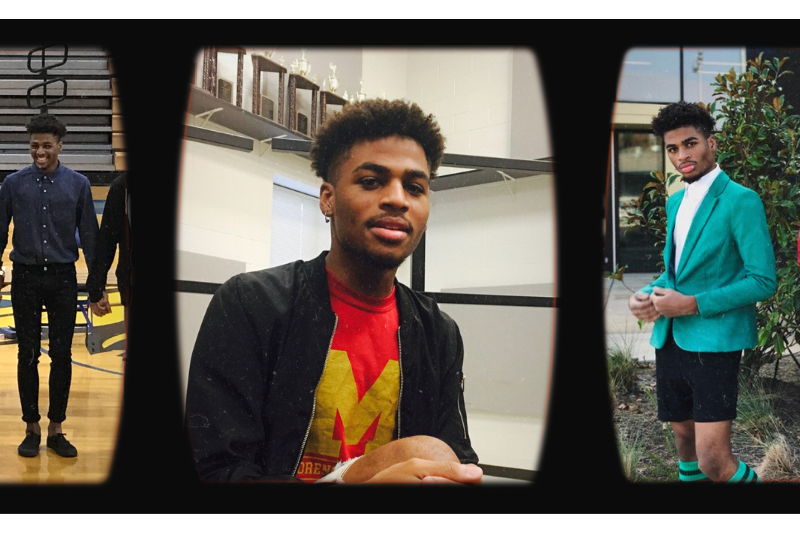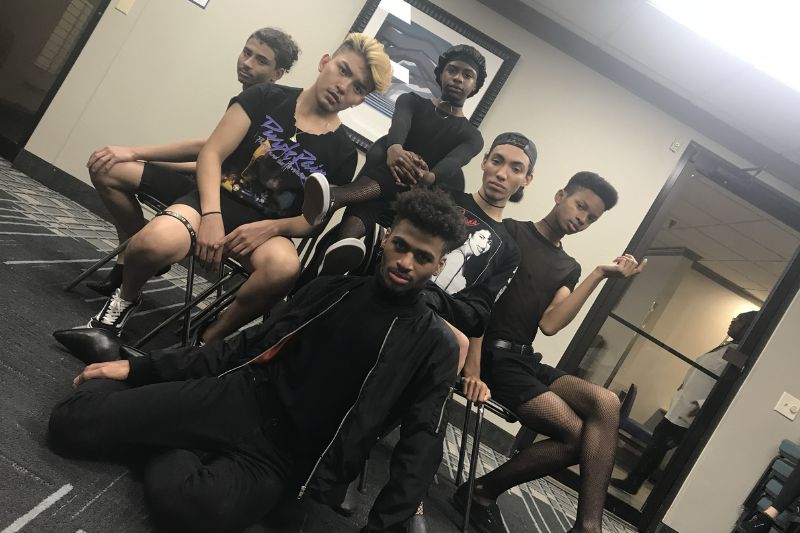.

Jordan Johnson has always loved art and creativity. At Mills University Studies High School, he took art class, was active in theater and played saxophone in marching band while also being in color guard and a cheerleader. In Johnson’s senior year, he started on a new canvas: his own face.
“Everyone at the time was watching these tutorials,” Johnson said. “That’s what I was obsessed with, and every single day after school, I would watch my videos.”
“I don’t know who I thought I was,” he continued. “But I literally was like, if I can paint this, I can sit here, and I can paint my face and do makeup.”
That same year, he started posting on Instagram under the handle @jakobejay, a mashup of his middle name and his initials (he’s “triple J: Jordan Jakobe Johnson”). While his peers were making plans for after graduation, he practiced doing makeup and uploading onto Instagram to chase his content creation dream.

“I would be working from four until probably ten or twelve,” Johnson said. “After work, I would sit here, and I would do makeup, and I would make my posts.”
“It was some funny moments I had with my mom because my mom gets up super early for work. So it would be like five in the morning, and I would have clown makeup on,” he said.
Beyond logistics, it wasn’t always easy. According to Johnson, some people in his high school talked bad about him ––both because he was posting online and because he was wearing makeup. As his content got more popular, he started getting internet haters as well.
“When we got to high school, he would wear crop tops or knit shirts,” said TaMya Stigall, a friend of Johnson’s from high school. “And some of the boys would be like ‘Why is he wearing that? That’s inappropriate’ like hating on him for no reason. But I think he kind of did a good job at not caring what people thought, and he would even come back and wear another one the day after, just to show he didn’t care.”
It paid off. While his peers were on spring break, he flew from Little Rock out to LA to do his first campaign with NYX cosmetics. It was his first time flying and the first time leaving the state. Since then his platform has grown to 35.1k followers on Instagram and 44.6 K followers on Tiktok, and he’s moved to LA to do content creation full time.
@jakobejay thick fluffy brows! 💋 #nyxcosmetics #makeup #browstutorial ♬ original sound - Novacane
Though social media has given platforms to more and more diverse groups of people than ever before, the beauty space is still dominated by white, thin, heteronormative, and conventionally attractive people.
Back when he started, Johnson said, “There was no one on Instagram/on Facebook doing makeup that looks like me. There was no black, queer boy. There was, at that time, little to none representation of what I looked like.”
“Representation matters” has become a cliche at this point. But it’s also true. For Johnson, he found a role model in Jackie Aina whose work and career motivated him to keep going and gave him someone to shape his own career after. In the beauty space, Johnson explains, it matters to the design of actual products, which often don’t carry shades for darker skin tones.
“We’ve [in the beauty community] been talking about this for years and years, and there’s still brands that don’t pick up, and they don’t understand.” Johnson said. “You can’t have 12 foundations for white people with yellow undertones, olive undertones, neutral undertones for each shade, but then only have 5 foundations for people of color.”

He has friends who have lighter skin tones than him who can’t find foundation with their undertones, and many brands don’t carry products in his range.
Though beauty companies have faced backlash in recent years for their lack of diversity and have made efforts to improve, there’s still a lot of work to be done. As of 2023, Black influencers still make 67% less than their white counterparts for their posts and are less likely to be invited on brand trips.
“Jakobe’s content is really important because even though there is a little bit more representation in social media nowadays, there still isn’t as much intersectionality,” explained Margie Zank, a friend of Johnson’s. “There may be big creators who are gay, but they’re also still white gay men.” Creators of color are out there. She’s one herself, but even as an insider in the makeup space, she couldn’t think of someone who has reached the level of fame as, say, James Charles who was Black and gay or had a similar intersectional identity.
Beyond product reviews/tests, Johnson recommends/supports brands who make products that are inclusive to all skin tones, sometimes recommending easy swaps for products that may not work as well on darker skin.
“I want to be the face of multiple brands,” he said. I want to be the representation I wish I had when I was in high school, looking for a black, queer boy that did makeup that I could relate to, because I know now there’s so many queer black boys that need that.”
